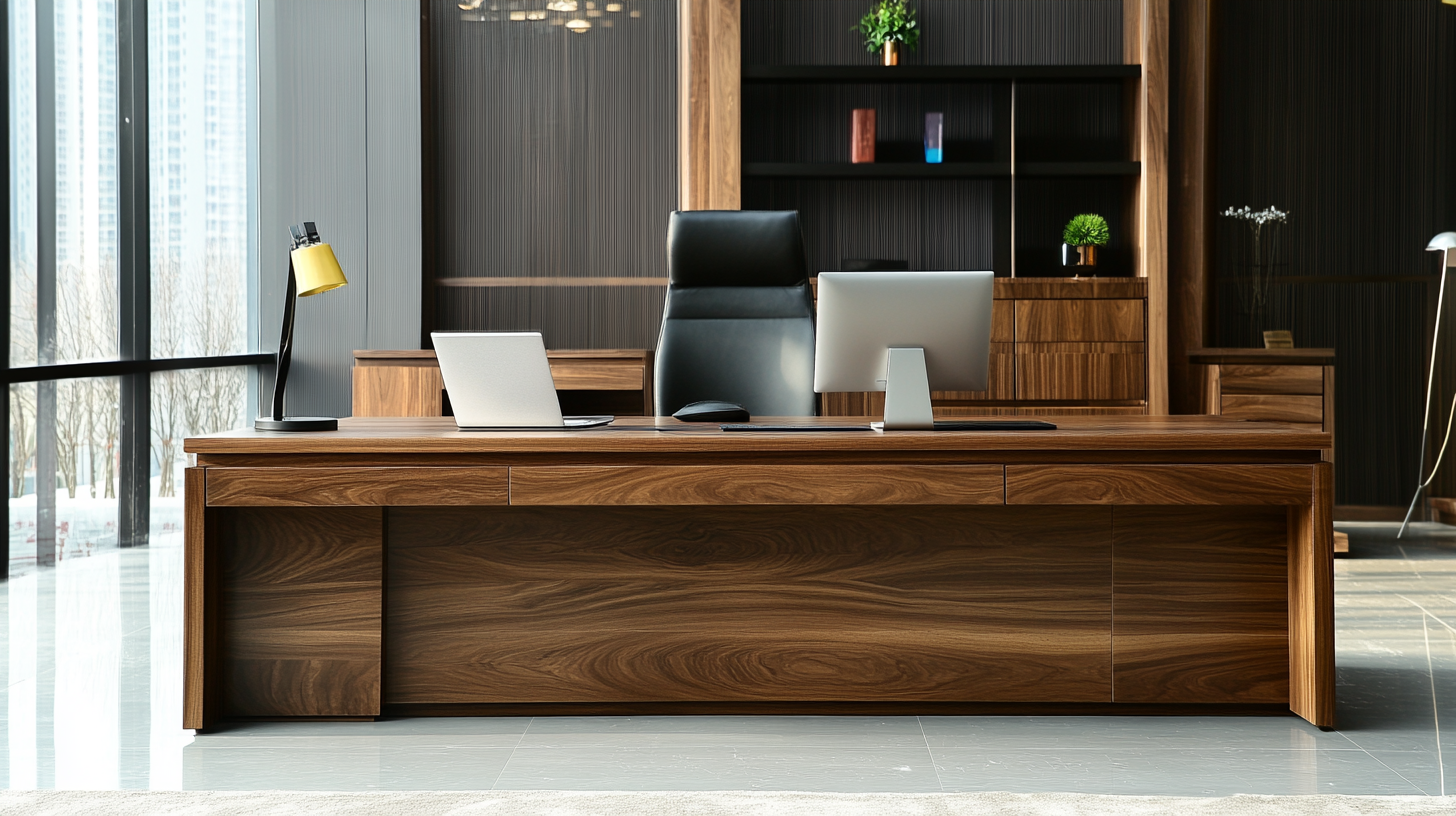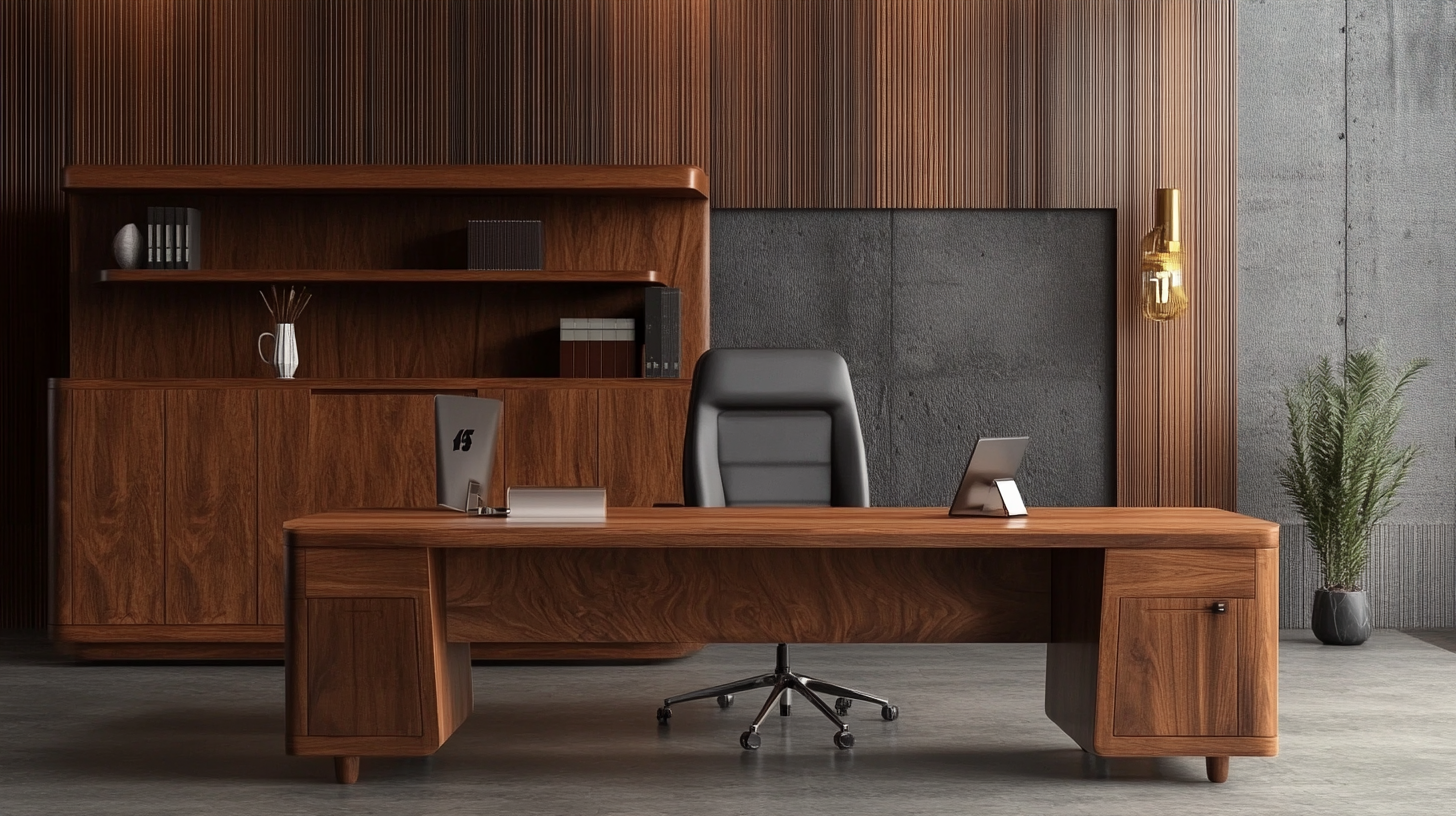Staverton is a British designer & manufacturer of contemporary office furniture.
Call us today: +44 (0)20 3794 1200
©2025 Staverton (UK) Ltd | Terms | Disclaimer | Cookies | Privacy
![]()
In recent years, the global landscape of office furniture manufacturing has been profoundly influenced by the ongoing trade tensions between the United States and China. Despite the imposition of significant tariffs and the resultant challenges that have emerged, China's office furniture sector has exhibited remarkable resilience and adaptability. This blog will explore how Chinese manufacturers have continued to thrive by focusing on the production of high quality office furniture that meets the evolving demands of a competitive market. These manufacturers have not only leveraged advanced technology and skilled craftsmanship but have also implemented strategic shifts to mitigate the impacts of tariffs. As a result, they have been able to maintain strong export levels while catering to both domestic and international client needs. Ultimately, this narrative highlights the innovative spirit of the Chinese office furniture industry and its ability to flourish even in the face of substantial adversity.

The ongoing US-China trade tensions have significantly influenced the landscape of international commerce, particularly in the office furniture manufacturing sector. The tariffs imposed on various goods have forced manufacturers to adapt quickly, leading to shifts in supply chains and production strategies. While some companies face challenges in maintaining profitability, others are finding opportunities to innovate and expand their markets amidst these hurdles.
To navigate this complex environment, it's essential for businesses to focus on diversification. Expanding supply bases beyond traditional markets can mitigate risks associated with tariff fluctuations. Additionally, companies should invest in understanding the nuances of current trade policies to make informed decisions about sourcing and pricing.
Another crucial tip is to emphasize quality and adaptability in production. With tariffs altering competitive dynamics, maintaining a high standard of product and being flexible in design or materials can create a competitive edge. Companies that prioritize these factors are more likely to thrive, turning tariff-related challenges into opportunities for growth in the evolving landscape of office furniture manufacturing.
This pie chart illustrates the market distribution of office furniture manufacturing in 2023, highlighting the significant share of China's domestic market compared to US imports from China and other sources.
Amid the escalating U.S.-China trade tensions and the burden of tariffs imposed by the Trump administration, China's office furniture manufacturing sector has demonstrated remarkable resilience. Faced with significant obstacles, manufacturers are leveraging innovative strategies to mitigate the impact of these tariffs. By streamlining production processes and enhancing supply chain efficiencies, Chinese firms are not only absorbing some of the cost increases but are also focusing on maintaining competitive pricing for their products.
Moreover, diversification of export markets has become a key strategic response. Manufacturers are increasingly looking towards Southeast Asia and other regions to offset dependency on U.S. markets. This shift not only reduces exposure to tariff-related risks but also opens up new growth opportunities in emerging markets. As global demand for office furniture continues to rise, China's ability to adapt and innovate in the face of tariff challenges positions it well for sustained growth, even in a turbulent trade environment.
China's office furniture manufacturing sector has demonstrated remarkable resilience in the face of US-China tariff challenges, largely due to its commitment to innovation and technology. In an era where global trade dynamics are constantly shifting, manufacturers in China have leveraged advanced technologies such as automation, artificial intelligence, and data analytics to streamline production processes. This integration not only enhances efficiency but also allows companies to respond swiftly to market demands, thereby maintaining a competitive edge.
Moreover, the emphasis on innovation extends beyond production techniques to include product design and sustainability. Chinese manufacturers are increasingly investing in research and development to create stylish, ergonomic furniture that meets the diverse needs of consumers while adhering to eco-friendly practices. This focus on both aesthetics and functionality has positioned China as a leading player in the global office furniture market, ensuring that it can not only withstand external pressures but also capitalize on emerging opportunities. The robust interplay between technology and design innovation stands at the forefront of China’s efforts to navigate the complexities of international trade and secure its growth trajectory in the industry.
This chart illustrates the growth rate of China's office furniture manufacturing from 2018 to 2023. Despite the challenges due to US-China tariffs, the industry has shown resilience, with significant innovations and technology playing crucial roles in sustaining growth.
In a post-pandemic world, the demand for office furniture has significantly shifted, as remote work becomes a norm and flexible workspaces gain popularity. Companies are now prioritizing health, comfort, and convenience, leading to a surge in ergonomic solutions and adaptable office layouts. As a leader in the domestic office chair industry, Henglin is seizing this opportunity by expanding its global footprint, with production bases set up in regions like Vietnam to meet international demand.
Tips for adjusting to the new office environment include incorporating sit-stand desks that allow employees to alternate between sitting and standing, promoting better posture and increased productivity. Additionally, investing in ergonomic chairs that provide proper lumbar support can enhance comfort during long working hours. As companies strategize for the future, focusing on the well-being of employees through innovative office furniture will be key to fostering a dynamic work culture.
With shifts in market trends, the importance of flexibility and adaptability in office designs cannot be overstated. As remote and hybrid work models continue to evolve, businesses are now tasked with creating spaces that encourage collaboration while also accommodating personal preferences. Prioritizing employee comfort can lead to improved job satisfaction and overall efficiency in a changing work landscape.

China's office furniture sector is poised for significant growth, emphasizing sustainability as a key focus in its future outlook. The global push for environmentally friendly practices is influential, particularly in commercial real estate, which is anticipated to reach a market value of $50 trillion by 2024. This trajectory highlights the integral role of sustainable office furniture solutions in enhancing workplace environments while aligning with eco-conscious investment trends.
As the South African furniture market expands, projected to grow from $2.57 billion in 2025 to $3.65 billion by 2032, China's office furniture manufacturers are well-positioned to cater to international demands. The emphasis on environmentally sustainable materials and production methods is increasingly becoming a competitive advantage, attracting a clientele that prioritizes environmental responsibility in their procurement processes. In this landscape, China's resilience in manufacturing despite tariff challenges reflects an industry ready to innovate and adapt, ensuring sustained growth and a robust presence in the global market.

Staverton is a British designer & manufacturer of contemporary office furniture.
Call us today: +44 (0)20 3794 1200
©2025 Staverton (UK) Ltd | Terms | Disclaimer | Cookies | Privacy
![]()
Please enter your details below to access the design files.
Please enter your details below to access the design files.
Please enter your details below to access the design files.
